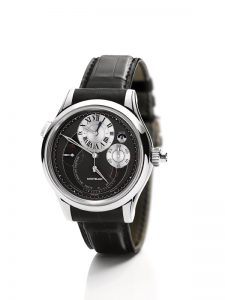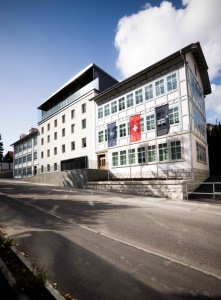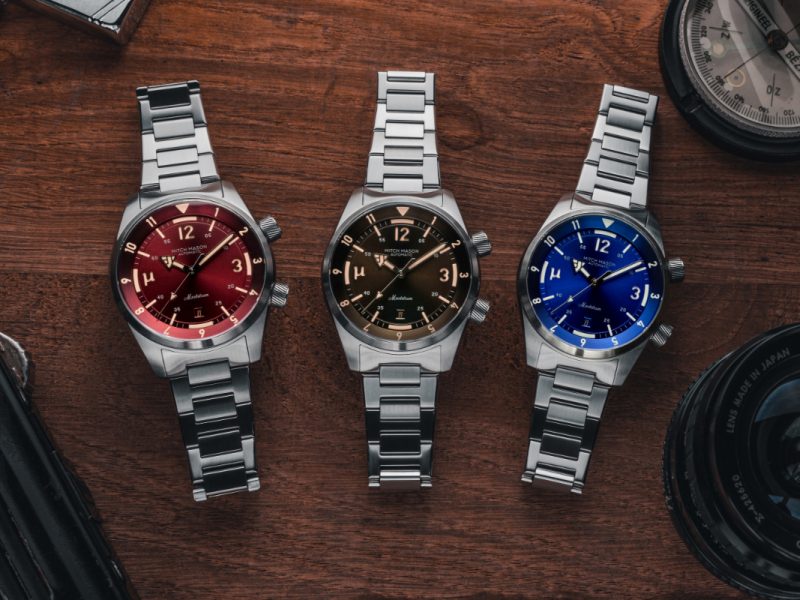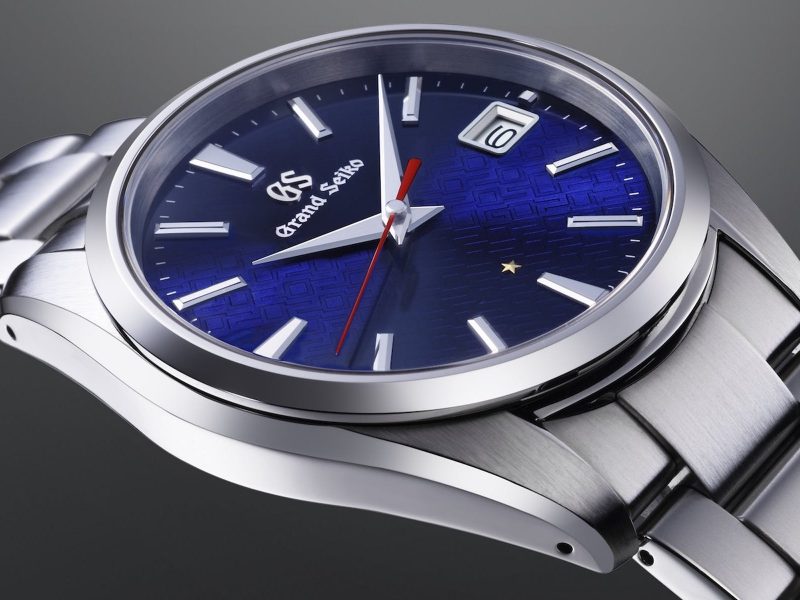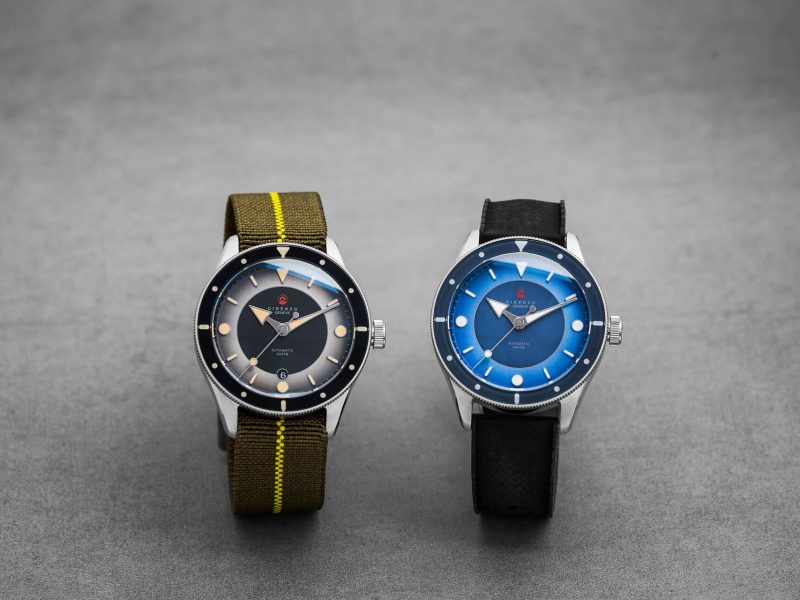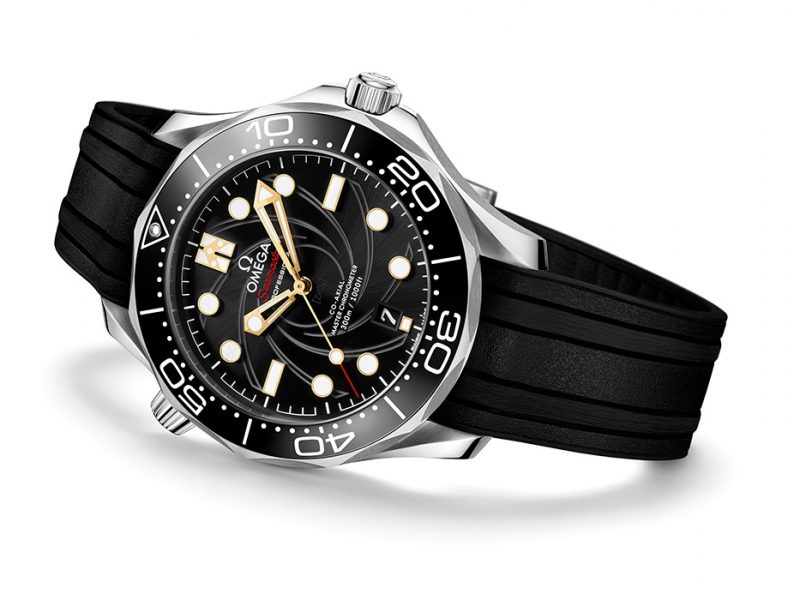Montblanc Collection Villeret 1858
On the 150th jubilee of the establishment of former traditional watchmaking manufacture Minerva, the newly founded Institut Minerva de Recherche en Haute Horlogerie is now ensconced in completely renovated premises in Villeret and presents two new timepieces from the Montblanc Collection Villeret 1858.
Just in time for the 150th anniversary of the founding of the watchmaking manufacture Minerva, extensive renovations at the premises of the newly founded Institut Minerva de Recherche en Haute Horlogerie in Rue Principale in Villeret were completed in October 2008. Refurbishment took almost one and a half years and the idea was, wherever possible, to retain everything worth preserving and to ensure that the historic foundations of the traditional watchmaking company were as well equipped to deal with the future as they have been over the past 150 years. As a result, the renovated building contains solid oak floorboards and herringbone parquet that is well over a century old. The windows, on the other hand, were replaced by modern double-glazed versions, although here too the frames and mullions are exact replicas of their historical forebears. The inner double windows were retained and put back into their original places after repainting. The electrical infrastructure and the IT systems have been replaced in their entirety. The machinery, of course, remained untouched; apart from state-of-the-art CNC and wire-erosion systems, there is a wealth of machines many years old, which would normally be found only in a museum. The watchmaking workshops, too, where some of the tools, machines and measuring instruments look extremely antiquated, remained basically untouched. Watchmakers tend to get used to their work-benches – known in the trade as ‘établis’ – and are generally prepared to give up the things they are familiar with only if it is impossible to retain them.
The most conspicuous change in the entire renovation took place on the attic floor, where the entire middle section of the gable roof has given way to a glazed atrium; this has blended in so perfectly with the existing structure that it appears always to have been there. It is a kind of penthouse, with a narrow balcony on the street side wherein future journalists, visitors and, above all, customers can be received who have come to pick up their watch from the Montblanc Collection Villeret 1858 personally. Now that the renovations are finished, the building remains a perfect reflection of the way the company works: a place in which tradition and innovation harmonise perfectly.
New: balance spring production at the Institut de Minerva en Recherche en Haute Horlogerie
But not only the building itself underwent renovation. As part of the extensive work of refurbishment, the watch manufacturing company set up a new workshop that has enabled it to fulfill a dream, with the resources that will equip it to make its own balance springs from start to finish. This has made the Institut Minerva de Recherche en Haute Horlogerie one of the most exclusive watch manufacturers in the world, because only a handful of leading watchmakers still have the wherewithal to do this. Since the company in Villeret also produces key components such as the balance, pallets and escape wheel in its own workshops, it means the Institut is able to tailor-make complete sets of parts for each movement without external assistance. The only item outsourced is the raw material for the balance wire. This is made of an alloy that is ideally suited to the needs of large balances with a frequency of 18, 000 bph. The untreated wire is drawn through increasingly fine templates until it has been attenuated to the desired diameter of less than 1/10 mm, each pass reducing its thickness by about 15%. Extremely fine diameters like this call for a very sure hand and necessarily reduce the speed at which the wire can be pulled to the stately pace of a few centimeters per minute. After several hours, once the wire has reached the required thinness, it is rolled flat between polished steel cylinders until it has the final rectangular cross-section required for the purpose. At this point the material is ready, but there remains much to be done until the balance spring that will breathe life into one of Montblanc’s exclusive watch movements is complete. To achieve this, a piece of the finished wire some 10 cm in length is hand-twisted into a spiral shape, undergoes a special tempering process and is fixed in its final form. The manufacturers prefer not to disclose any further details of the techniques involved, pointing out merely that they have invested years in perfecting the individual processes. Now the company is able to produce some of the most exclusive balance springs available, and these are destined for use solely in the exquisite timepieces that comprise the Montblanc Collection Villeret 1858.
The Institut Minerva de Recherche en Haute Horlogerie: Where manufacture still means ‘made by hand’
There are only a handful of watch manufactures in the whole world able to cover a watchmaking spectrum that extends from the art of handmade watches according to old Swiss tradition through to the state-of-the-art engineering behind the industry of today. One of these is the Institut Minerva de Recherche en Haute Horlogerie, which has grown out of the small, exclusive workshop that was once Minerva. The company was founded in 1858 in the village of Villeret in the Jura and very soon began specializing in the production of chronographs of the very highest quality. Only very few watch manufacturers can still look back on such along, uninterrupted history, and over the years Minerva has held fast to the working methods traditionally associated with Swiss watchmaking at its best. It is none other than the art of traditional haute horlogerie, which is carried out largely by hand. Only a very small number of master watchmakers today have the knowledge and expertise needed for this extremely rare and exclusive form of watchmaking. Important components such as the generously sized balance, with its high moment of inertia, are made in-house. The company also produces its own tailor-made balance springs and counts their active length using old, traditional methods, while the mise en fonction of the chronograph control is carried out meticulously by hand for each individual movement. There are no longer many watch manufacturers who are able to produce such vital components for their timepieces by hand, using traditional methods. In 2007, in order to preserve its authenticity, Minerva joined forces with Montblanc, which is equally devoted to preserving and practicing handed-down manufacturing traditions in all its business activities. As a result, the Institut Minerva de Recherche en Haute Horlogerie was founded. Montblanc thus makes an enormous contribution towards keeping a unique form of expertise alive and preserving this invaluable expertise for posterity. The unwavering commitment of the Institut Minerva de Recherche en Haute Horlogerie to handcrafted watchmaking makes it the perfect partner for Montblanc Montre SA in Le Locle, which recently designed and produced its own movement developed entirely in-house. The chronograph movement: an achievement that has firmly established it as a watchmaker’s workshop, successfully blending the art of traditional watchmaking with the production methods of the 21st century.
From the foundation of a watchmaking company to the Institut Minerva de Recherche en Haute Horlogerie
In 1858 Charles-Yvan and Hyppolite Robert founded the H. & C. Robert watchmaking factory in Villeret, a village in the St. Imier valley in the Swiss Jura. These were still the early days of a period that would see Switzerland emerge as the world’s leading watchmaking nation. And like most of the watch manufacturers of the period, the Roberts started out as ‘etablisseurs’. In other words, they purchased movement blanks, parts, cases and dials etc. from other manufacturers and used them to make their own watches. These were fine-quality pocket watches, most of them with a cylinder escapement and a new system for winding the movement and setting the hands via the crown. These had soon established a reputation that went far beyond the borders of Switzerland, as witnessed by the certificates awarded to the C. Robert company at world exhibitions in Antwerp(1885)and Paris(1889). On 30 July 1887, the Minerva brand name and trademark arrowhead were deposited with the Swiss Federal Office of Intellectual Property. Following the entry of the second generation of the Robert family at the end of the 19th century, the company completed its transformation to a genuine watchmakers’ workshop: an establishment that developed and produced its own movements, made its own cases and mastered all the skills required for watch production. The sons of company founder Charles-Yvan Robert strengthened the company’s independence by increasing its vertical range of manufacture. In 1902 the company started producing the first pocket watch movement with a cylinder escapement developed entirely in-house. In the next ten years, it was to produce a good dozen basic movements of its own. These were mechanisms with cylinder or lever escapements, chronograph functions and stopwatch movements, whose steel levers already had the typical formal features that still distinguish Minerva chronographs from the rest. The 19-line no. 3 calibre, which served as the basis for several other movements, was to become particularly well known. In 1909 the company was one of the first to make a movement designed especially for wristwatches, which at the time were becoming increasingly popular. Unfortunately, these technological advances were ac-companied by several twists of fate for the Robert family, who gradually began to withdraw from everyday business activities. In 1929 the company was finally renamed Minerva SA; on 12 June 1935 it was sold to Charles Haussener and Jacques Pelot, who had both been employed by Minerva since 1921. Haussener was in charge of producing the movement blanks, while watch technician Pelot took control of the R&D department. With his indomitable flair, Pelot extended the product range and, among other things, designed a mechanical stopwatch with a 19-line 42 calibre. This ran at a speed of no fewer than 360 000 beats per hour (50 Hertz) and was able to measure times to an accuracy of one-hundredth of a second. Instead of following the prevailing trend and industrializing production, Minerva opted to keep its existing infrastructure, which was perfectly geared to the manufacture of small but highly exclusive series. As one of very few manufacturers, the company was thus able to draw on the master watchmakers, the original tools and the expertise needed to make mechanical timepieces in keeping with authentic Swiss watchmaking tradition. In 2007, under Montblanc’s aegis, Minerva became the Institut Minerva de Recherche en Haute Horlogerie, dedicated to classical fine watchmaking and the upholding of traditional skills and special complications. It is thus able to focus completely on its true calling: the art of watchmaking at its consummate best, calling for a wealth of manual skills, authentic Swiss tradition and an extremely high degree of vertical integration. Needless to say, when methods like these are used, production figures are only very small. Back in 2007, Montblanc made substantial investments to sustain this irreplaceable experience and expertise and to secure it for generations of watch devotees to come. The aim of the Institut is to preserve invaluable skills, to build on them and to foster them to new greatness. One factor of particular importance here is training. The newly founded Institut is intended to function as a kind of think tank, where young watchmakers can meet up to exchange ideas and be initiated into the old traditions, the expertise developed over generations, the rich body of experience and the mentality typical of the true master watchmaker. This purpose, too, was the reason for the Foundation Minerva de Recherche en Haute Horlogerie, for which the capital was supplied by Montblanc. The Foundation began providing financial and logistic support for its first non-profit projects this year. There are also plans for exhibitions, workshops and events for people in the industry, with a view to making what the Institut has to offer accessible to as many interested individuals as possible.
Montblanc timepieces comply with the strictest rules of watchmaking
Since 2007, the name Montblanc Collection Villeret 1858 has stood for timepieces manufactured in accordance with the tenets of traditional haute horlogerie. Each demands such a high level of specialized craftsmanship and finishing that annual production is limited to just a few hundred watches. Movements, of which each type is limited to a maximum of 288 pieces, have been specially developed for these watches. The figure 288 stands for the sum total of two gross(one gross equalling twelve dozen), which has traditional significance in watchmaking. Central to the development of new movements is a focus on classical ‘garde-temps'(timekeeper)philosophy, with special attention being paid-in view of Minerva’s history – to the chronographs. In terms of their form, all movements rely on the outstanding legacy of Minerva, which set new standards with the unmistakable aesthetics of its beautifully shaped bridges and levers. The individual parts are finished to a level of perfection mastered by only a very limited number of specialists. The parts of the movement and other components used in the manufacture of watches in the Montblanc Collection Villeret 1858 pass through the hands of highly specialized and qualified master watchmakers hundreds of times. Production capacity is thus naturally limited, and the year 1858 dictates the number of the various models manufactured in each limited edition. Taking the formula 1/8/58 as a basis, production will comprise one unique piece in platinum together with eight in white gold and 58 in rose gold.
One-offs for lovers of the truly unique
As if strict limitation were not exclusive enough, the various movements will also be crafted as highly individual, unique works of art featuring designs based on the personal wishes of their future owners. Buyers discuss their wishes and ideas with the maître horloger and a designer at the Institut Minerva de Recherche en Haute Horlogerie, subsequently receiving a series of suggestions, from which they can choose to suit their preferences. Of course the stylistic statement made by even a unique piece like one of the these watches must be in line with the Montblanc Collection Villeret 1858 as a whole, but otherwise there is virtually no limit to the customer’s wishes as regards design. Whether he requires a dial of solid platinum or naturalslate, pavé diamonds running the entire spectrum from yellow to brilliant white, or cloisonné enamelisimmaterial, as long as it is technically possible and does not interfere with the watch’s functionality. Customers who choose to embellish their timepiece from the Montblanc Collection Villeret 1858 with a work of art like this have the guarantee that their choice of wristwatch will exist once, and once only, worldwide. It’s an exclusive feature that generates real pride of ownership but at the same time considerably increases the watch’s value as a collector’s item. With their authentic haute horlogerie character, the limitation of each calibre to just 288 pieces, and their extremely limited availability(if not tailor-made uniqueness), the watches in the Montblanc Collection Villeret 1858 meet all the conditions one would expect of a genuine collector’s item. Several lines of haute horlogerie watches have appeared in the Montblanc Collection Villeret 1858 since 2007. Each of them has attracted enormous attention within the industry and has instantly been appreciated by many connoisseurs.
Art in the truest sense of the word
The timepieces in the Montblanc Collection Villeret 1858 are items with a high cultural value and can rightfully be considered very special works of art. In recognition of this-as well as their extremely limited availability-each timepiece in the Montblanc Collection Villeret 1858 is accompanied by a set of lithographs presented in a leather-bound case: historic depictions of the old Minerva manufacture, landscape impressions of the Jura mountains, illustrations of watch movements, and a lithograph of the watch in question. The latter is at the very heart of each portfolio because, like the watch itself, it is unique. It bears the watch’s serial number, its number in the limited edition, and the handwritten signature of master watchmaker Demetrio Cabiddu. Each set of lithographs is assembled individually and is thus an element in the philosophy that makes each and every watch in the Montblanc Collection Villeret 1858 something very unique.


